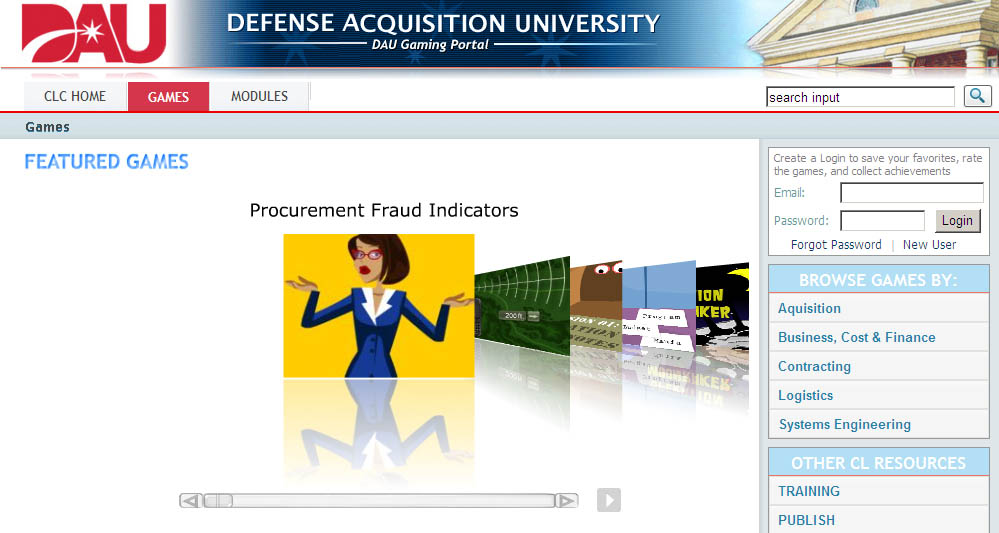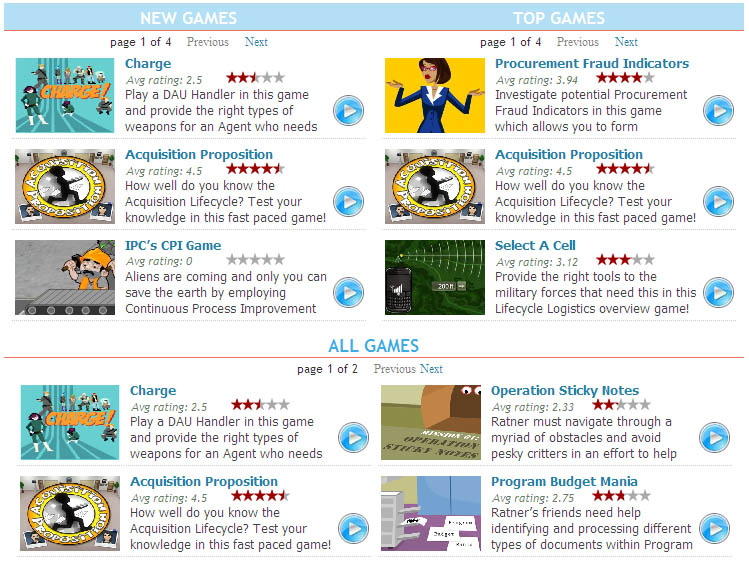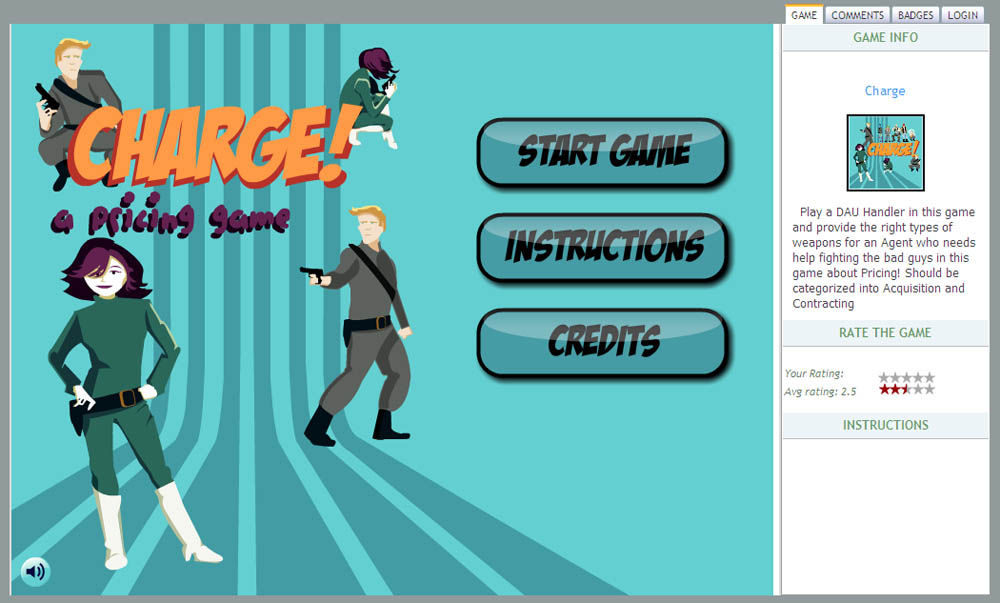The use of games in education and training is quickly becoming a mainstream practice. The negative connotation of the word “games” has all but dissolved in the past five years, but organizations continue to struggle to find the right time and the right place to implement games within their portfolios.
Historically, at Defense Acquisition University, the games initiative focused on games that closely aligned with both the learning objectives and the context of the acquisition workforce. But a new usage paradigm is emerging that has more potential than any of the traditional implementations made to date. DAU has allowed its own learners, the Acquisition workforce, to dictate what types of experiences they want to have based on their existing technology usage patterns. Those patterns first led DAU to look to the commercial games industry and have now led to the launch of the first Department of Defense casual gaming site. (Figure 1)

Figure 1. DAU launched the first
Department of Defense casual gaming site.
More and more people are spending their time playing the shorter online or app-based games that represent the casual games industry. The success of the casual games industry was unavoidably propagated with examples of games that don’t cost millions of dollars to create, but still are extremely appealing to the target users that many organizations are finding commonalities with. The casual games industry doesn’t necessarily cater to eighteen-year-old boys who require more controller options than the F-18, but it doesn’t exclude them either. Instead, these games are gender- and age-neutral. These games are engaging and compelling, despite often lacking awe-inspiring graphics and multiple-year production cycles.
On December 1, 2010 we are launching the DAU Gaming Portal with 13 games, redefining the use of games in education and training. (Figure 2) The evolution of this initiative was an obvious path, since the DAU student population mirrored the most prevalent users of casual games. However, the journey to incorporating educational concepts into this type of game took considerably more strategy. There is a central theme in this initiative: in order to yield the most interesting content, the games relate to the core competencies that all members of the Acquisition workforce must have in common.
 Figure 2. Some of the 13 games in the
first launch of the DAU Gaming Portal.
Figure 2. Some of the 13 games in the
first launch of the DAU Gaming Portal.
Pricing, for example, might be very specialized at the application level of Acquisition; but at its core, there are generalized pricing guidelines and principles that all Acquisition professionals should be aware of. From this concept, games like Charge! were born. (Figure 3) Charge!, one of the games launching with the games site, is a game created by the ADL Co-Lab that allows a learner to play a “Q”-type character (from the James Bond series of novels and movies) who is assisting a special agent in the acquisition of weapons to defeat a villain. In order to be successful in Charge!, a player must abide by the pricing and contracting guidelines set forth by Acquisition regulations. Players unfamiliar with those guidelines can still be successful though, as each level contains structured feedback in order to elicit an understanding of this competency.
 Figure 3. Charge! Helps players learn
Acquisition pricing and contracting guidelines.
Figure 3. Charge! Helps players learn
Acquisition pricing and contracting guidelines.
All of the games included on the site are short, often focusing on one to three learning objectives and created using Flash technologies. The games on the site require very little instruction to play, and were drawn from high-level concepts that most people will recognize and be able to have initial successes with. The DAU games site also represents a commonly accessible site that students in the formalized portion of DAU’s curriculum can visit or refer to for game play as homework assignments, reinforcement of topics, and remediation when necessary.
In addition to Charge!, the site also includes an additional three games designed primarily for the purpose of populating this site. Those games include Select-A-Cell, a logistics life cycle game; Acquisition Proposition, a “Diner Dash”-style game based on the major phases of acquisition (Figure 4); and an Invasion Prevention game designed to leverage the tenants of continuous process improvement to prevent the earth from being destroyed by aliens. The remaining nine games debuting with the site are games that other aspects of DAU’s games initiative currently use, and that met the criteria for inclusion in the games site.
 Figure 4. Acquisition Proposition,
modeled on the popular “Diner Dash” video game, teaches the
acquisition lifecycle.
Figure 4. Acquisition Proposition,
modeled on the popular “Diner Dash” video game, teaches the
acquisition lifecycle.
The design of the site represents the types of functionality that casual game players have come to expect from the online places where they typically play games. These include the ability to:
-
Play games without having to log in
-
Browse games by topic areas
-
Log in and create a user profile
-
Mark and save favorite games
-
Rate and leave comments about games
-
Collect and store badges for game play
DAU plans to release one game per month on the site, starting in January of 2011, in order to keep content fresh and players coming back. Actual site usage data will affect consideration of continued funding for the games site project. There is no requirement to be a DAU student to register for and use the games site, so please check it out at http://clc.dau.mil/games.



